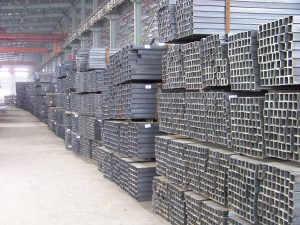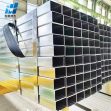Deepening steel pipe reform
The Industrial Carbon Peak action is a programmatic document for the low-carbon development of our country’s energy-intensive industries, and it is also the basis for the iron and steel industry to formulate “double carbon” road maps, construction drawings and schedules. The industrial sector should accelerate green, low-carbon transformation and high-quality development, and strive to take the lead in achieving carbon peak. The iron and steel industry is an energy-intensive industry with many energy media and large total energy consumption, and it is also subject to the dependence of process technology on fossil fuels, so the task of carbon reduction is heavy and difficult. It is highlighted in the industrial Peak action, which fully reflects the significance of welded steel pipe in the iron and steel industry to achieve carbon peak in the industrial field. From the overall path, the carbon peak of the steel industry can be divided into the following aspects:

First, deepen the supply-side structural reform of the steel industry, strictly implement the replacement of production capacity, strictly prohibit new production capacity, promote the optimization of stock, and eliminate backward production capacity. We will promote the merger and reorganization of China steel tube manufacturers across regions and ownership systems to improve industry concentration. We will optimize the distribution of productivity, and continue to reduce steel production capacity, focusing on the Beijing-Tianjin-Hebei region and its neighboring regions. In line with the top-level design related to a series of supply-side structural reforms released since 2016, it focuses on reducing production capacity and promoting restructuring, and emphasizes the importance of many measures such as capacity replacement, stock optimization, elimination of backwardness, and improvement of concentration. At the same time, it is clear that the Beijing-Tianjin-Hebei region and its surrounding areas will be taken as key areas to continue reducing steel production capacity such as rectangular hollow section.
The second is to promote the structural optimization of the iron and steel industry and the replacement of clean energy, vigorously promote the demonstration of non-blast furnace iron making technology, improve the recycling and utilization level of scrap steel resources, and promote the whole scrap electric furnace process. This covers the two dimensions of process structure optimization and energy structure adjustment. The proposed “promoting the demonstration of non-blast furnace iron making technology, improving the level of scrap steel resource recycling and utilization, and promoting the whole scrap steel electric furnace” are all coordinated optimization of process structure and energy structure. Non-blast furnace ironmaking reduces the dependence on coke, scrap steel recycling is a substitute for carbon steel pipe, and the implementation of full scrap electric furnace has clear provisions for the incoming steel.
The third is to promote advanced and applicable technologies, dig into the potential of energy saving and carbon reduction, encourage coproduction of tempering, and promote the development of low-grade waste heat heating. Increasing the penetration of mature technologies to improve energy efficiency across the spectrum; Encourage coproduction of steel and strengthen the extension of industrial chain.
Tel: +86 18202256900 Email: steel@fwssteel.com
Previous: Energy efficiency in the steel industry
Next: Cost supports price










